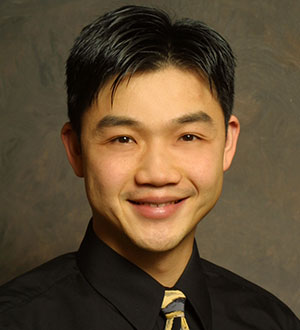With spring around the corner and field sports getting ready to resume, it is a great time to discuss injury prevention and first aid.
While most people are very comfortable with cuts and bruises, many are not quite as comfortable dealing with dental trauma, primarily because they don’t know much about it, and often times the injuries just look awful. However, armed with a few key pieces of knowledge, it is not difficult to render aid; and with timely intervention, a great majority of the time the injuries can be remedied.
Oral-facial and dental injuries are quite common among children of all ages. From babies learning to walk to young men/women playing contact sports, children have the potential to hurt themselves. It is simply a part of growing up that we all experience. Most of the time a little bump and bruise is all there is, but there are instances where the teeth break, get knocked out of place or get knocked out completely. When dental trauma occurs, timely action can make the difference between keeping the tooth or not. Let’s look at the first-aid guidelines for the different injuries.
The broken tooth
After calming the child, begin by finding the fragment(s) that may be nearby. Collect and store the fragment(s) in a Ziploc bag with some clean water and call your pediatric dentist. Inform him/her that the child has broken a tooth. Most offices will offer you same-day or next-day appointments to take care of your child. If a fragment cannot be found, or the pieces are just too small, that’s okay; the dentist can usually rebuild the tooth using white resin composite material. Having a nice big piece simply improves the beauty of the final outcome.
When a tooth breaks, the nerves inside may or may not be involved. Timely action may prevent a progressive infection and increase the chance that the tooth may be restored. If your usual dentist isn’t available, or isn’t comfortable dealing with traumatic dental injuries, contact any pediatric dental clinic and they may be able to find ways to help.
The tooth that got knocked crooked
These types of injuries can range from very minor to extremely severe. The treatment needed also varies considerably. Several factors are important to consider. First, is it a baby tooth or permanent tooth? Second, how displaced is the tooth and in what direction? Third, are the surrounding bone and gums intact? All of these factors will determine whether the tooth can be salvaged and what the long-term outcome may be. Contact the dentist immediately. If the patient can be seen within a couple of hours, typically the tooth can be easily repositioned and splinted.
The tooth that’s knocked out
If the child is 6 years old or younger, most likely it is a baby tooth and first-aid would be to clean the wound and have the child bite on clean gauze. Because the chance for adverse outcome is high following re-plantation, knocked out baby teeth are rarely replanted back into the mouth.
If the child is older than 6 years of age, the knocked out tooth may be permanent. The tooth will likely be about one-inch long, and there should be a socket (hole) in the jaw bones. Find the tooth and rinse gently in cool water. Do not scrub or clean with soap. Plant the tooth back in the socket and have the child hold it in place with clean gauze or cloth while you call the dental office. If you can’t put the tooth back in the socket, place the tooth in a clean container (Ziploc bag is OK) with cold milk (whole milk is better than skim) or the child’s own saliva. Do not store tooth in water or wrap it in tissue dry. Get to the dental office as soon as possible – call and tell them you are already on your way. The faster you act, the better your chances at saving the tooth.
If there are deep cuts to the face or the lips, or signs of concussion, visit the nearest pediatric emergency department first. The child should be deemed stable and cleared by the physicians before he or she visits the dentist.
Dr. Ronald Hsu is a pediatric dentist providing comprehensive oral and dental care at Storybook Dental. He is also the president-elect of the Clark County Dental Association.


